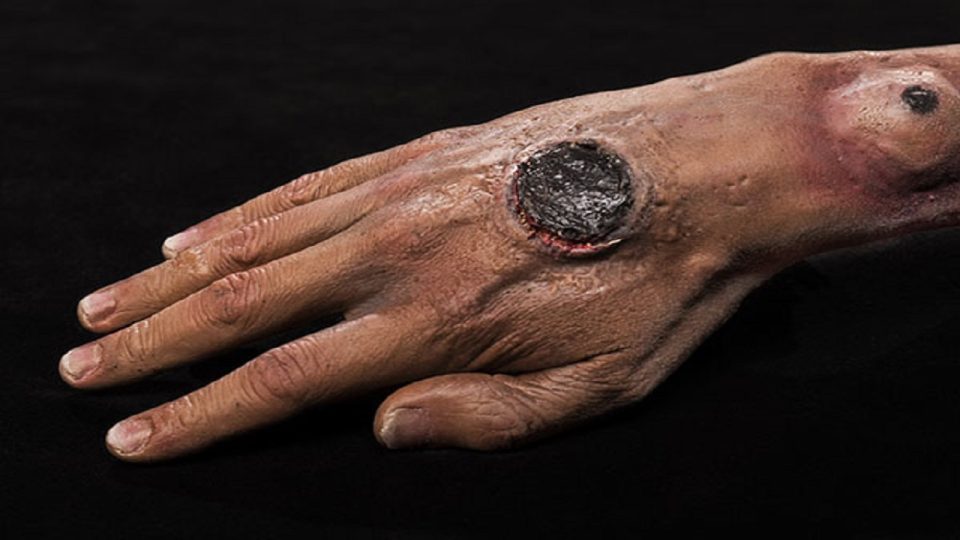Anthrax is a zoonotic (from animals to humans) deadly infectious soil-borne disease that that affect livestocks like goats, cattle, sheep, and horses caused by Bacillus anthracis, a spore-forming bacterium.
Humans infection occurs through direct or indirect contact with sick animals, there’s no evidence yet that anthrax is transmitted from person to person. The infection with the bacteria occurs when anthrax spores enter the body through a wound in the skin or by eating contaminated meat or inhaling the spores.

What Symptoms To Expect
Most people show symptoms after a day to six days of exposure. However, symptoms from inhaled spores of anthrax can take longer, sometimes up to six weeks. You can get the disease through four different ways and each with unique symptoms. Notwithstanding the way you contacted the disease, untreated anthrax have the potential to become lethal, spread throughout the body.
Gastrointestinal Anthrax
Eating undercooked meat of an infected animal causes gastrointestinal anthrax disease. It may impact the digestive system, from the neck to the colon. This can be deadly and may be asymptomatic. The signs and symptoms of gastrointestinal anthrax include:
- Fever
- Nausea and vomiting
- Abdominal discomfort
- Flushing (red cheeks and eyes)
- Severe bloody diarrhea
- Throat discomfort and swallowing issues
Ascites can be present and the result is septicemia and intestinal necrosis with possibly fatal toxicity. Approximately half of the patients die without proper treatment. However, 60% of patients will survive if they are treated on time.
Cutaneous Anthrax
Cutaneous (Skin-related) anthrax diseases enter your body through your skin, typically through a cut or a wound. Within one to ten days after contact with an infective spores, there presence of painless, itchy, red-brown papule on the skin. The signs and symptoms of cutaneous anthrax include:
- Collection of tiny pimples or blisters that sometimes itch
- After the little blisters or bumps, a painless skin sore (ulcer) with a black core emerges
- Swelling at the site of the sore
The sore is typically located on the face, neck, arms, or hands. It’s the disease’s most prevalent transmission and the mildest type of anthrax. However, when properly treated, cutaneous anthrax usually is not fatal.
Inhaled Anthrax
This type occurs when anthrax spores are inhaled. The signs and symptoms include:
- Respiration difficulty
- Nausea
- Bloody cough
- Sweats (often soaking)
- Extreme exhaustion
- Painful swallowing
- Meningitis
- Shock characterised by the breakdown of the circulation system
There is no conventional bronchopneumonia. However, anthrax in the gastrointestinal tract or hemorrhagic meningoencephalitis might occur. This is the most lethal type of illness and frequently results in death, even with medication.
Injection Anthrax
Injection anthrax disease manifests through unauthorised drug injection. However, the only recorded cases of anthrax infection from this most recent discovery is in Europe. The symptoms of injection anthrax are comparable to th ose of cutaneous anthrax, but injection anthrax can spread more quickly throughout the body and is more challenging to diagnose and treat. The symptoms include:
- At the injection site, a cluster of tiny, itchy blisters or bumps may develop
- After the blisters or spots, a painless skin sore with a dark core develops
- You may develop shock
- Possible multiple organ failure
- Abscesses in the muscle where the medication was injected or deep under the skin
The results likely depend on their severity, although other illnesses’ symptoms can also be mistaken for these. For example, drug users who take injections frequently have skin and site infections, which may not always indicate anthrax.
Biological (Bioterrorism) Anthrax Attack
Anthrax (Bacillus anthracis), is one of the most powerful biological agents used in bioterrorism. It is one of the powerful biologica agent because of these reasons:
- Anthrax spores are normally found in nature, they can also be produced in a lab, the spores can last for a long time in the environment
- it can be released anywhere without anyone knowing. The spores are microscopic with no smell, and could be added into powders, sprays, food, and water.
- It is on record that anthrax has been used as a weapon before.
United States Bioterrorism Attacks With Anthrax.
In 2001, spores of anthrax in powdered form were intentionally inserted into letters that were mailed through the U.S. postal system. This led to the infection of Twenty-two people, including 12 mail handlers of which five of them died.





